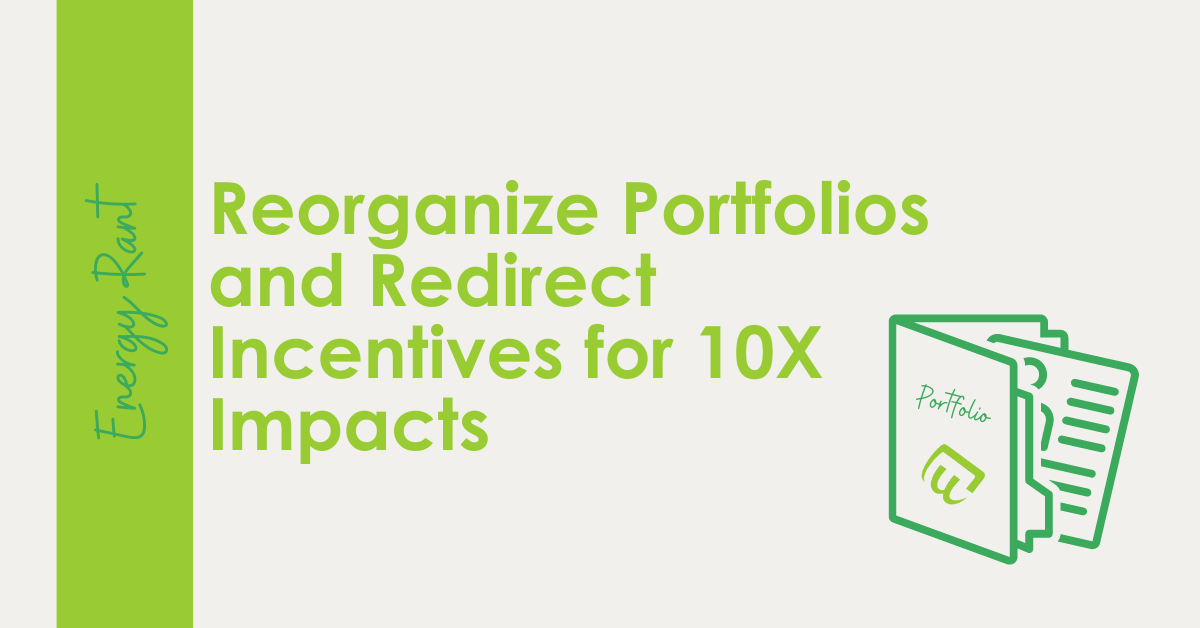
A couple weeks ago, I quickly read this article, Cracking the Code – Aligned Incentives, on EnergyCentral.com. It concerns incentives for high-performance employees, but my read was about incentives for efficiency programs. It applies to that too.
Myopic Focus
I wrote about short-term focus many times, including last week – if your lips are chapped, stop licking them – short-term gain for longer-term pain. Efficiency portfolio administrators, typically utilities, want long-lived measures, deep energy savings, and instant savings. The demand for instant savings is like harvesting the carrots at day 30 rather than at day 70 maturity.
SEM Myopathy
As noted in Strategic Energy Planning, one classic example is strategic energy management programs, which are often myopic, emulating the carrot example. I have witnessed everything from 1) we’re not taking savings for behavioral measures because they are not enduring to 2) we’re only taking savings for behavioral measures. Capital measures must be passed on to other implementation contractors running other programs. The customer doesn’t want to deal with another person or entity. This is dumb and results in a bad customer experience. Customers need a single long-term champion to drive deep savings year after year.
Widget Myopathy
The second example also features rewards for carrot harvest at 30 days. Why plan and prepare for a months-long project when I can take savings now for a maglev chiller[1] in a 1:1 replacement for one-tenth the savings? Wow! Is that ever a blown opportunity, especially now, when the chiller can be rolled into a thermal energy storage project and capture a thirty or forty percent tax credit? “Dumb” one-for-one chiller replacements were always classic cases of blown opportunities, but today, it’s criminal.
That is just one example. Most cases include an opportunity to take a systemic perspective to achieve deep energy savings that accomplish many multiples of a dumb one-for-one replacement. Programs don’t incentivize that path but encourage the easy, low-impact option. Unfortunate.
Silos of Excellence
Utility Department Silos
I already alluded to silos of excellence above, where customers get handed around to different implementation contractors or maybe back to the utility. More significant issues will emerge, particularly with grid resilience and reliability, if factions within utilities don’t merge and scale solutions to resolve issues before they become major problems.
On several occasions, I have explained that efficiency has never been considered a resource that offsets or even competes with supply-side resources. This Utility 2.0 post is a great primer. Efficiency and load management haven’t scaled like solar, the impacts of which are obvious in emerging duck and canyon curves throughout the U.S. Grid planners, from utilities to regional transmission organizations, are aware of solar impacts, but the load management side is still nascent as solar was 15 years ago. Efficiency programs are still tiny, and to my knowledge, no one considers them a serious means to shape load to match intermittent renewable supply.
Efficiency and Load Management Silos
Efficiency programs are closer to social justice and wealth redistribution programs than resource acquisition. From my perspective, utilities treat them as public relations programs – keep intervenors at bay and keep prominent and influential customer pitchforks and torches in the barn. On the other hand, demand response is more of an actual resource acquisition to manage reliability and keep prices in check. The mindsets are fundamentally different, and therefore, the organizations and approaches are different.
DSM and DR Silos
Goals for demand-side management programs involve energy savings and rarely demand savings. I described the “demand side management” misnomer in How About Some D in DSM. From my observations and listening, grid planners within utilities rarely know DSM program teams in their organization, nor do they account for their impacts. But even more surprising to a logical space alien is that there is typically little cross-pollination of ideas and resources (staff, budget, etc.) between DSM and DR (demand response) for a given utility.
Remember iDSM, which stands for integrated demand side management? Per the Peak Load Management Alliance, iDSM is “A program design type that delivers the benefits of EE to customers and DR to the grid using the same technology intervention and/or a linked incentive while leveraging the same program delivery resources and infrastructure.” That is a good idea, but an abandoned or never considered one.
I’m not aware of any bona fide iDSM programs because of the scenario described under myopathy above. Program administrators have short-term (this year) savings goals and budgets. The funds are siloed, and the goals are siloed. Much of this blame falls on great ideas from regulators and lawmakers.
P4P Bricks in the Silo Wall
Pay-for-performance (P4P), which is ubiquitous these days, is a scheme by which program administrators, primarily utilities, put the sharp elbow of price pressure on the jugular veins of contractors. It seems like a great idea on the surface – like getting bids to build a tightly specified substation, except your customer, utility, isn’t a tightly defined substation. Customers have many needs, and utilities have many needs. Pay for performance promotes siloed thinking and action because here is its underlying message to implementation contractors: “We’re not paid for that. Put the blinders on and ignore those other customer needs. Get the easy stuff (e.g., maglev chiller), get out, and move on.”
Integrate and Collaborate
I could write plenty more chapters to this book, but I’ll reflect on our company’s purpose – what our driver is – to minimize waste and maximize value. It isn’t just energy and material waste; it’s wasted opportunities to make bigger impacts per dollar spent. We must rethink business models and approaches to greater, longer-term, and multi-dimensional outcomes. We’re here to help.
[1] A maglev chiller has magnet-levitating, oil-free bearings.





